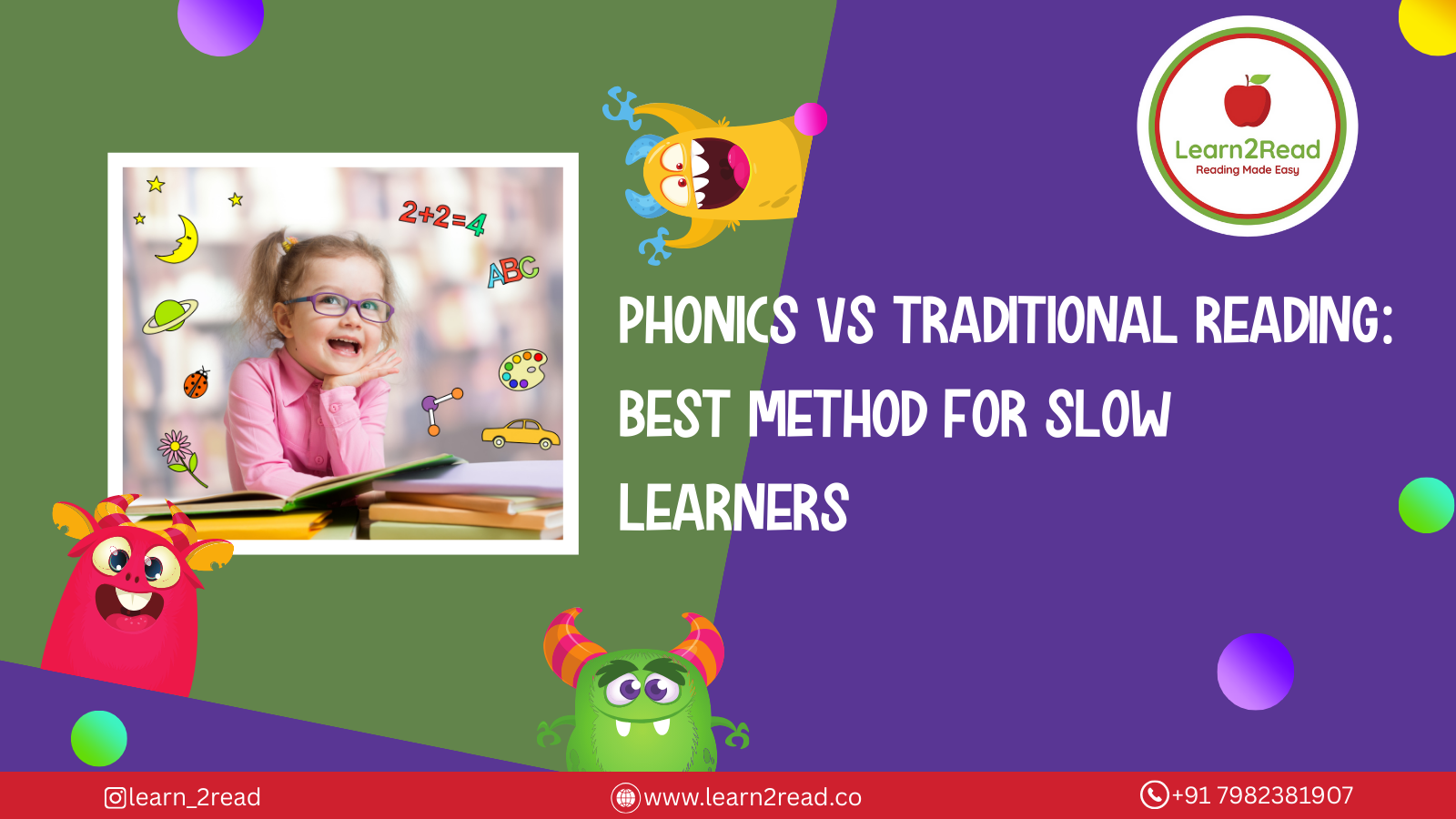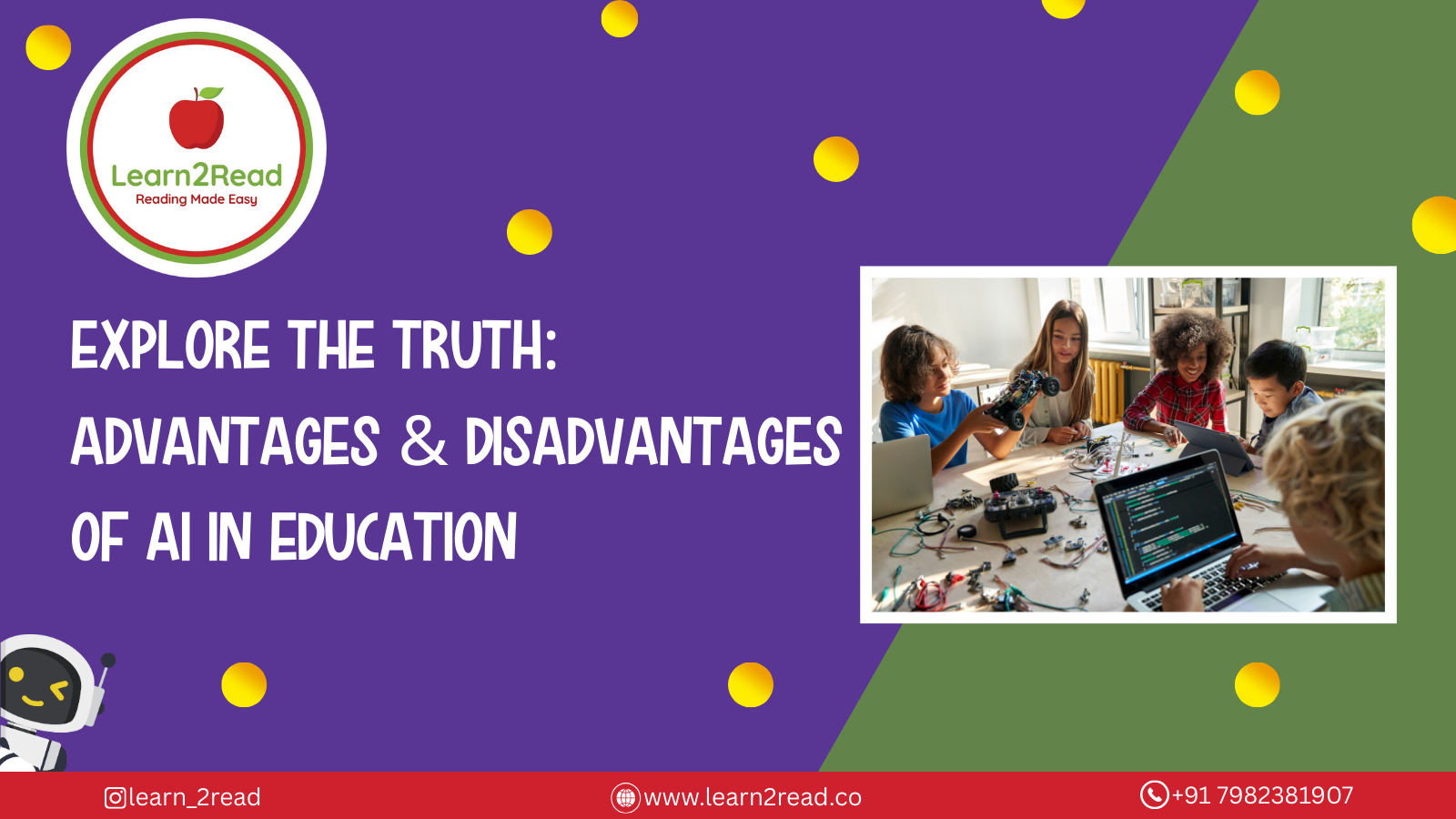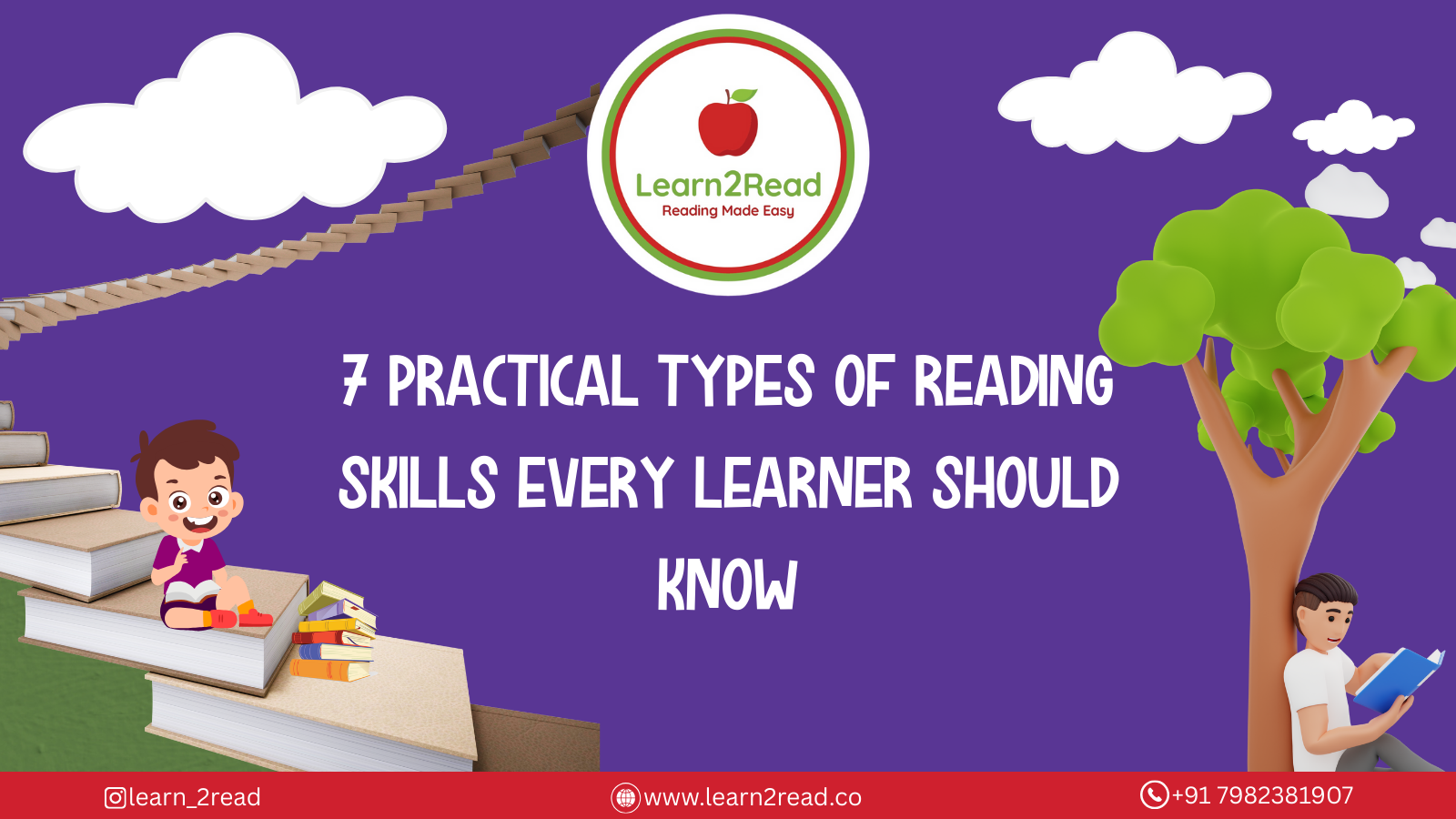19 September 2025
Phonics vs Traditional Reading: What Actually Works for Early Learners?

Phonics vs Traditional Reading: What Actually Works for Early Learners?
posted on : 19 September 2025
As a parent, it’s natural to feel concerned when your child struggles with reading. You may have tried reading with them every day, signing up for extra classes, or even switching schools only to find them still falling behind. The truth is, if your child is a slow learner, the problem might not be how much support they’re getting but the method they’re being taught with.
Most schools still rely on traditional reading instruction, which often doesn't work for children who learn at a different pace. That’s where phonics-based learning comes in. Backed by research and proven in classrooms and homes around the world, phonics is changing how we support early readers, especially those who need a little extra time and care.
What Is Traditional Reading Instruction?
Traditional methods of teaching reading are usually centered around memorization. Children are shown whole words and expected to recognize and remember them over time. For example, they might be introduced to the word “apple” and asked to recall it from memory the next time they see it.
For children who learn quickly, this can work well enough. But for slow learners, this system is often confusing and discouraging. When every new word is a memory test, reading becomes stressful instead of joyful. Many children begin to feel like they’re “bad at reading” when, in reality, the method just isn’t suited to their learning style.
What Makes Phonics Different?
Phonics is a sound-based approach that teaches children how to connect letters with their sounds and blend them together to read words. Instead of memorizing whole words, they learn that:
- The letter “b” makes the /b/ sound
- “a” makes the /a/ sound
- “t” makes the /t/ sound
With this understanding, they can sound out “b-a-t” and read the word “bat” even if they’ve never seen it before. It’s a logical, repeatable process that helps children feel more in control of their learning. And for slow learners, that confidence boost makes all the difference.
Why Phonics Works Better for Slow Learners
Less Pressure, More Understanding
When a child doesn’t need to memorize hundreds of words, they feel less overwhelmed. Phonics gives them a clear, structured way to decode unfamiliar words, which takes the guesswork out of reading.
It Teaches Core Reading Skills, Not Shortcuts
Phonics helps build the different types of reading skills that children need to become independent readers like sound recognition, blending, segmenting, and decoding. These skills form the foundation of fluent reading and make learning new words easier in the long run.
Encourages Active Problem-Solving
Children learning with phonics aren’t just repeating words, they're breaking them apart, sounding them out, and putting them back together. This encourages curiosity and a deeper understanding of how language works.
Builds Long-Term Confidence
Slow learners often struggle with self-esteem when they fall behind in class. But when they master phonics, they can decode new words on their own, making them feel capable and motivated to keep going.
The Research Behind It
Studies have consistently shown that phonics instruction leads to better reading outcomes than traditional methods especially for children who find reading difficult. The National Reading Panel found that phonics instruction significantly improves reading accuracy, fluency, and comprehension, and is especially effective for struggling learners.
In fact, a 2020 study published in the Journal of Early Childhood Literacy found that children who practiced phonics daily with their parents showed 30% higher gains in reading fluency compared to those who relied only on school instruction. This shows just how powerful the right method and parental support can be.
How to Support Your Child at Home
Choose the Right English Classes
Look for English classes that use a structured phonics-based curriculum. At Learn2Read, our programs are designed to meet children at their current level whether they’re complete beginners or already starting to read independently. Our phonics classes are especially helpful for slow learners, offering gentle, consistent support with engaging activities and professional guidance.
Make Reading a Daily Habit
Practice phonics in small doses every day. Sound out simple words together while playing, cooking, or driving. The more your child hears and uses letter sounds, the more natural reading will feel.
Be Patient and Encouraging
Every child learns differently. Celebrate the small wins like sounding out a new word or finishing a sentence. Encouragement goes a long way in building a child’s confidence, especially if they’re already feeling behind.
If your child is a slow learner, the way reading is taught matters more than how often it's taught. Traditional methods based on memorization can lead to frustration and self-doubt. But with a phonics-based approach, your child gains the skills, strategies, and confidence to decode words, understand language, and enjoy reading.
At Learn2Read, we specialize in helping parents support their children’s reading journey with proven phonics programs that build real results step by step.
Ready to give your child the tools they need to succeed?
Explore our phonics-based English classes designed to support slow learners and help every child fall in love with reading.
Latest Posts


19 September 2025
Types of Reading Skills and How to Develop Them in Kids

19 September 2025
Phonics vs Traditional Reading: What Actually Works for Early Learners?

19 September 2025



